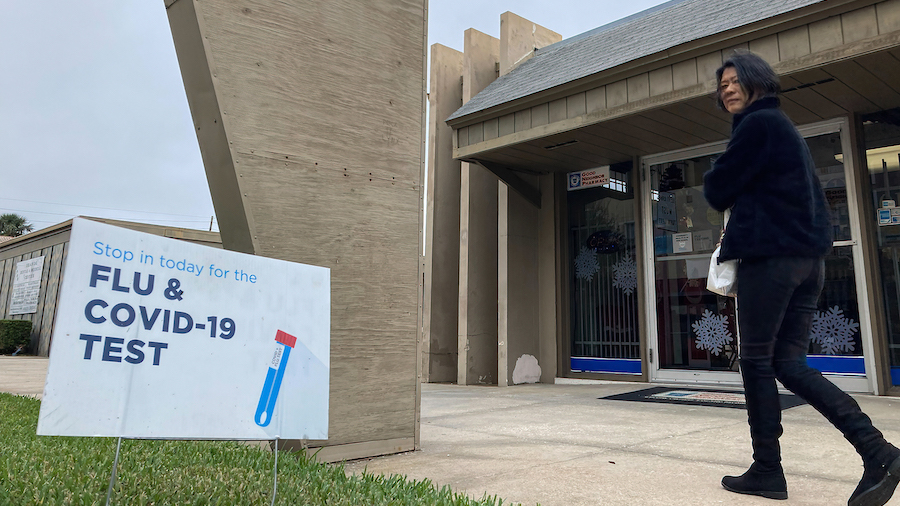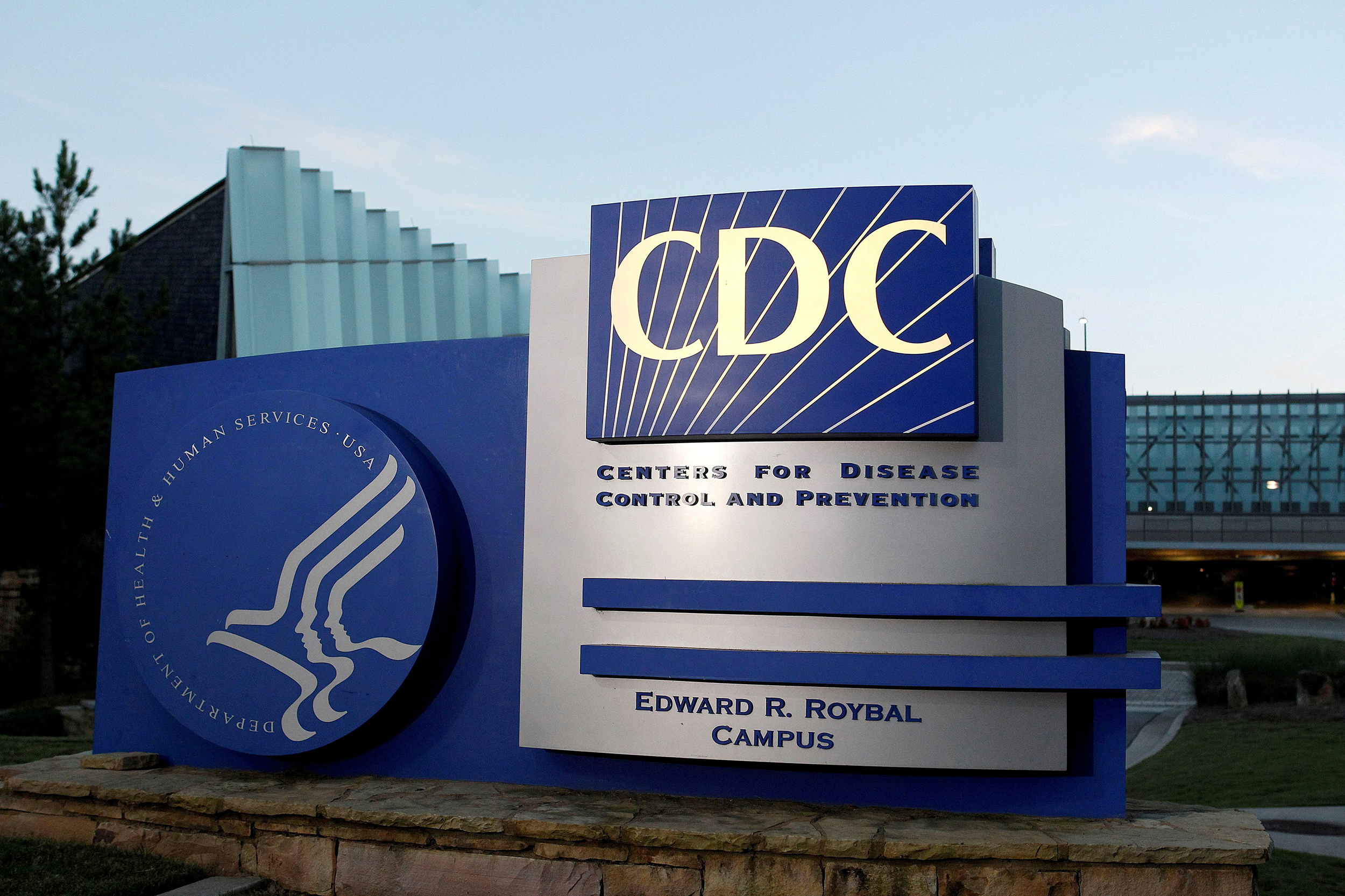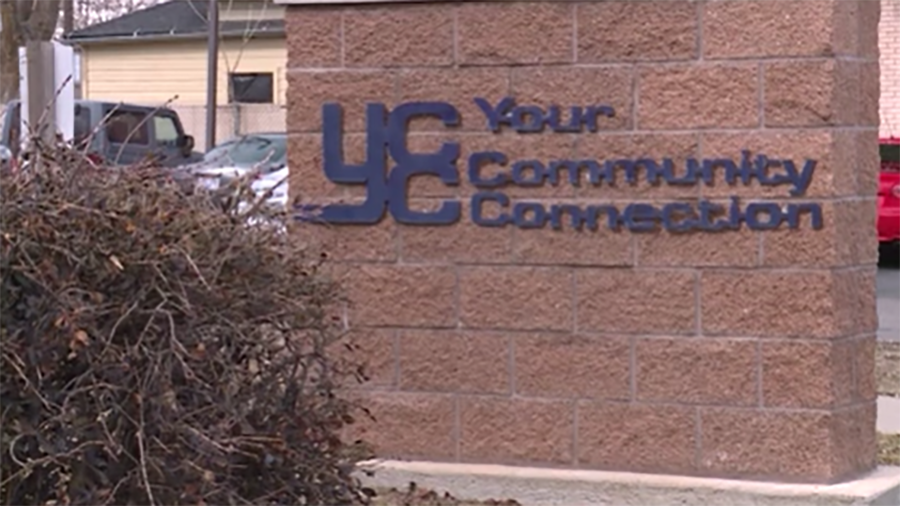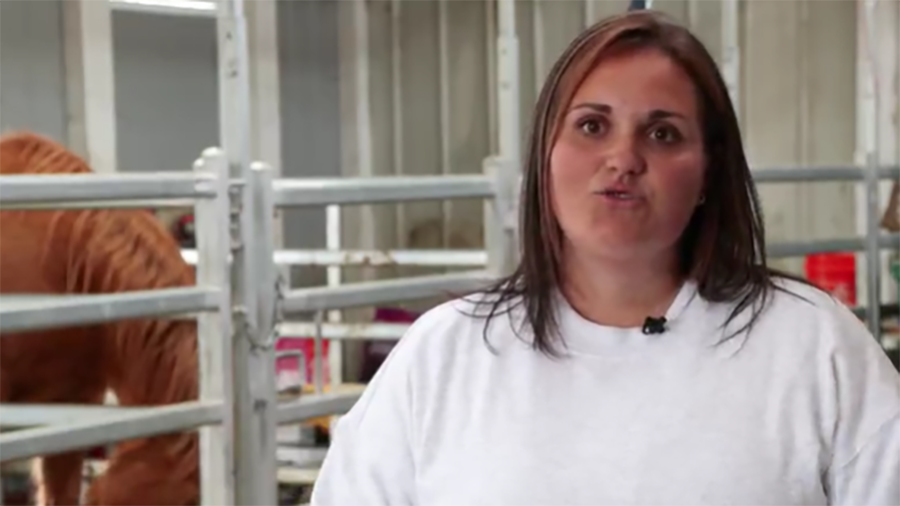HEALTH
Flu, COVID-19 and RSV are all trending down for the first time in months
Jan 20, 2023, 2:50 PM

A sign advertising flu and Covid-19 testing is seen in front of a pharmacy in Orlando, Florida, on Dec. 21. (Paul Hennessy/SOPA Images/Sipa USA/FILE via CNN)
(Paul Hennessy/SOPA Images/Sipa USA/FILE via CNN)
(CNN) — A rough respiratory virus season in the U.S. appears to be easing, as three major respiratory viruses that have battered the country for the past few months are finally all trending down at the same time.
A new dataset from the U.S. Centers for Disease Control and Prevention shows that the number of emergency department visits for the three viruses combined — flu, COVID-19 and RSV — have dropped to the lowest they’ve been in three months. The decline is apparent across all age groups.
Measuring virus transmission levels can be challenging; health officials agree that COVID-19 cases are vastly undercounted, and surveillance systems used for flu and RSV capture a substantial, but incomplete picture.
But experts say that tracking emergency department visits can be a good indicator of how widespread — and severe — the respiratory virus season is.
“There’s the chief complaint. When you show up to the emergency room, you complain about something,” said Janet Hamilton, executive director at Council of State and Territorial Epidemiologists. “Being able to look at the proportion of individuals that seek care at an emergency department for these respiratory illness concerns is a really good measure of the respiratory disease season.”
In the week following Thanksgiving, emergency department visits for respiratory viruses topped 235,000 — matching rates from last January, according to the CDC data.
While the surge in emergency department visits early in the year was due almost entirely to omicron, the most recent spike was much more varied. In the week ending Dec. 3, about two-thirds of visits were for flu, about a quarter were for COVID-19 and about 10% were for RSV.
Grouping the impact of all respiratory viruses together in this way offers an important perspective.
“There’s a strong interest in thinking about respiratory diseases in a more holistic way,” Hamilton said. “Transmission is the same. And there are certain types of measures that are good protection against all respiratory diseases. So that could really help people understand that when we are in high circulation for respiratory diseases, there are steps that you can take — just in general.”
Now, COVID-19 again accounts for most emergency department visits but flu and RSV are still the reason behind about a third of visits — and they’re all trending down for the first time since the respiratory virus season started picking up in September.
More new data from the CDC shows that overall respiratory virus activity continues to decline across the country. Only four states, along with New York City and Washington, D.C., had “high” levels of influenza-like illness. Nearly all states were in this category less than a month ago.
Whether that pattern will hold is still up in the air, as vaccination rates for flu and COVID-19 are lagging and respiratory viruses can be quite fickle. Also, while the level of respiratory virus activity is lower than it’s been, it’s still above baseline in most places and hospitals nationwide are still about 80% full.
RSV activity started to pick up in September, reaching a peak in mid-November when five out of every 100,000 people — and 13 times as many children younger than five — were hospitalized in a single week.
RSV particularly affects children, and sales for over-the-counter children’s pain- and fever-reducing medication were 65% higher in November than they were a year before, according to the Consumer Healthcare Products Association. While “the worst may be over,” demand is still elevated, CHPA spokesperson Logan Ramsey Tucker told CNN in an email — sales were up 30% year-over-year in December.
But this RSV season has been significantly more severe than recent years, according to CDC data. The weekly RSV hospitalization rate has dropped to about a fifth of what it was two months ago, but it is still higher than it’s been in previous seasons.
Flu activity ramped up earlier than typical, but seems to have already reached a peak. Flu hospitalizations — about 6,000 new admissions last week — have dropped to a quarter of what they were at their peak a month and a half ago, and CDC estimates for total illnesses, hospitalizations and deaths from flu so far this season have stayed within the bounds of what can be expected. It appears the U.S. has avoided the post-holiday spike that some experts cautioned against, but the flu is notoriously unpredictable and it’s not uncommon to see a second bump later in season.
The COVID-19 spike has not been as pronounced as flu, but hospitalizations did surpass levels from the summer. However, the rise in hospitalizations that started in November has started to tick down in recent weeks and CDC data shows that the share of the population living in a county with a “high” COVID-19 community level has dropped from 22% to about 6% over the past two weeks.
Still, the XBB.1.5 variant — which has key mutations that experts believe may be helping it to be more infectious — continues to gain ground in the U.S., causing about half of all infections last week. Vaccination rates continue to lag, with just 15% of the eligible population getting their updated booster and nearly one in five people remain completely unvaccinated.
Ensemble forecasts published by the CDC are hazy, predicting a “stable or uncertain trend” in COVID-19 hospitalizations and deaths over the next month.
And three years after the first COVID-19 case was confirmed in the U.S., the virus has not settled into a predictable pattern, according to Dr. Maria Van Kerkhove, the World Health Organization’s technical lead for the COVID-19 response.
“We didn’t need to have this level of death and devastation, but we’re dealing with it, and we are doing our best to minimize the impact going forward,” Van Kerkhove told the Conversations on Healthcare podcast this week.
Van Kerkhove says she does believe 2023 could be the year in which COVID-19 would no longer be deemed a public health emergency in the U.S. and across the world, but more work needs to be done in order to make that happen and transitioning to longer-term respiratory disease management of the outbreak will take more time.
“We’re just not utilizing [vaccines] most effectively around the world. I mean 30% of the world still has not received a single vaccine,” she said. “In every country in the world, including in the U.S., we’re missing key demographics.”
The-CNN-Wire™ & © 2023 Cable News Network, Inc., a Warner Bros. Discovery Company. All rights reserved.













